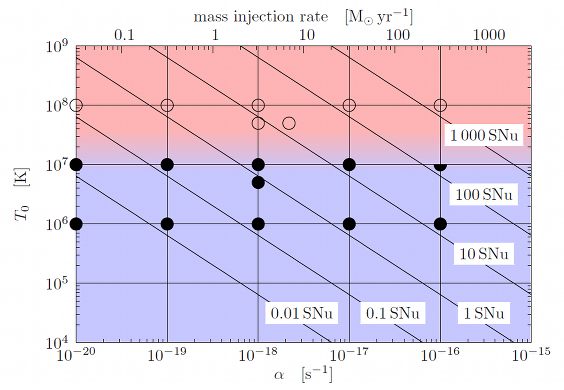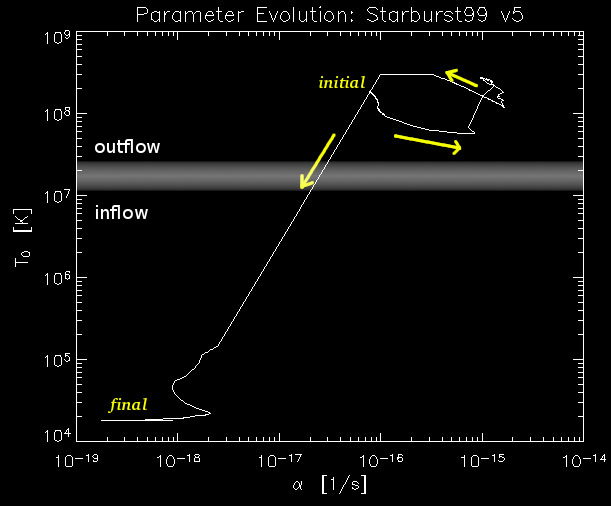Evolution of the Interstellar Medium in Elliptical Galaxies
Starburst Phase
We modelled the impact of the stellar evolution during galaxy formation on
the parameters that determine the dynamics of the interstellar medium (ISM),
the mass injection alpha and the heating parameter T0 (that is the heating
power divided by the mass injection rate), see
astro-ph/0502403.
 A set of simulations was performed for the alpha-T0 parameter space, finding
that for values T0 above a critical value, an outflow (galactic wind, open
circles, red background) forms, while for lower T0 the gas flows inwards
(filled circles, blue background), possibly providing a gas reservoir for the central
black hole. The critical value can be approximated by
A set of simulations was performed for the alpha-T0 parameter space, finding
that for values T0 above a critical value, an outflow (galactic wind, open
circles, red background) forms, while for lower T0 the gas flows inwards
(filled circles, blue background), possibly providing a gas reservoir for the central
black hole. The critical value can be approximated by

from the galactic gravitational potential, where cv = 2.5e8 erg/(g K).
We used results from Starburst99 evolutionary synthesis code. The following image shows the evolution of the galaxy in alpha-T0 parameter space and how epochs of inflow or galactic winds might occur. It starts at (1e-16, 1e8) evolves through the loop in the upper right and goes down towards the lower left corner where it waggles around at the final time (10 gigayears after the starburst).

In this simple model, the galaxy is created by an instantaneous formation of all stars and passive evolution afterwards. The evolution can more easily be seen in this MPEG animation, where the current position is indicated by a square. The sudden drop in T0 follows from the drop of the supernova rate because at about 40 million years after the starburst, the last supernova of type II exploded (core collapse of a massive star). Supernovae of type Ia are not accounted for (they are caused by a thermonuclear disruption of white dwarfs in binary systems). These supernovae would cause T0 to rise again. They are not included because the temporal evolution of these events is very uncertain.
